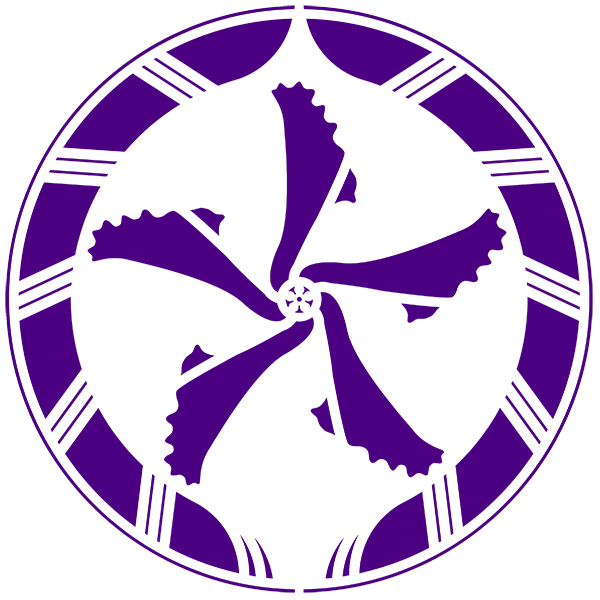
From banal conference badge to collectible item
Throwback to 2010 when I was leading marketing and communications at the PICNIC Festival in Amsterdam during the day, and the Conference Director of Frontiers of Interaction in Rome at night.
The first decade of the 2000s had been a fervent period for innovative media-tech-creativity conferences to rise and refresh what had been a stale space run mostly by corporate event organisers. DLD, PICNIC, Le Web, Barcamps and a re-energised TED (through their period of radical openness) changed the format, feel and content of business-related events. Back then I was also running a blog - Conference Basics - covering these exciting times.
I was asked to join Frontiers of Interaction (known colloquially as “Foi” or “Frontiers”) to turn it from a free, high quality amateur event created in 2005 by Leandro Agrò and Matteo Penzo into a professional conference that could grow into a business of its own.
While my job at Frontiers was to manage the whole process, from curation to execution alongside with the founders, I also made sure that we put time and effort into the details that our audience, designers and technologists from all walks of life, cared about. One such detail were the mediocre attendee badges that most conferences relied on, often a printed piece of paper inserted into a cheap plastic holder.
“The details are not the details. They make the design.”
– Charles Eames, designer, architect and filmmaker
Think about it, the badge is the only thing that remains from an event once it's over. A trophy of sorts with your name and the date on it that’s often displayed at one’s working place. So why not invest in making them memorable?
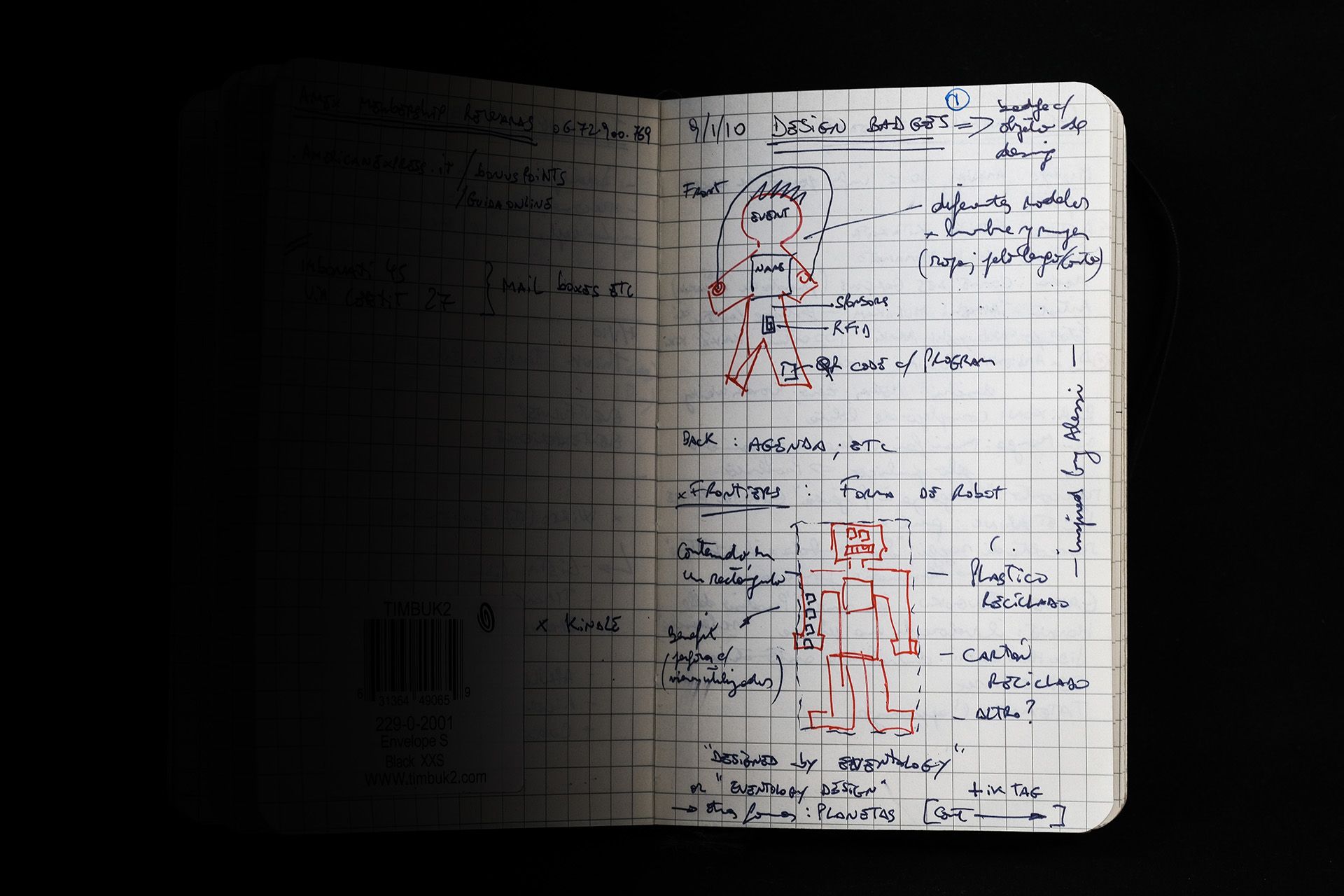
With this in mind, I doodled in my little notebook what a more meaningful conference badge could look like. Some of the features I came up with were that it would:
- Have a particular shape relating to the content of the event
- Feature a distinct front and back, with the attendee’s details on the front and the programme on the back
- Have two holes so that the badge could always stay facing front when hooked with a lanyard
- Be somehow personalisable by allowing for perforations or stickers that would mark different features
- Include novelty features like a QR code or an RFID chip to access extra information
- Be well made either of recycled cardboard or plastic, and definitely not require a plastic holder!
I came up with the idea of making them in the shape of robots, although I also considered planets and other anthropomorphic alternatives. For the final design I engaged Florencia Rodriguez Daniel, a graphic designer friend, who turned my concept into a real thing. Printing and delivery was managed by Fabio Tassinari and his team at IMD.
We had to compromise on the number of perforations for the lanyard, probably because they were provided by a sponsor with just one hook. If you look at the designs, the place for the two holes was clearly marked on them.
The badges came in four versions: Geek (all attendees), Speakers, Staff and Students. All of them had different needs and had to be easily identified from a distance.
We didn’t use QR codes (too early) nor RFID chips and preferred low-tech little stickers that could be applied on the front to identify sub-categories of participants, like sponsors and press. Mine had my profile photo on it.
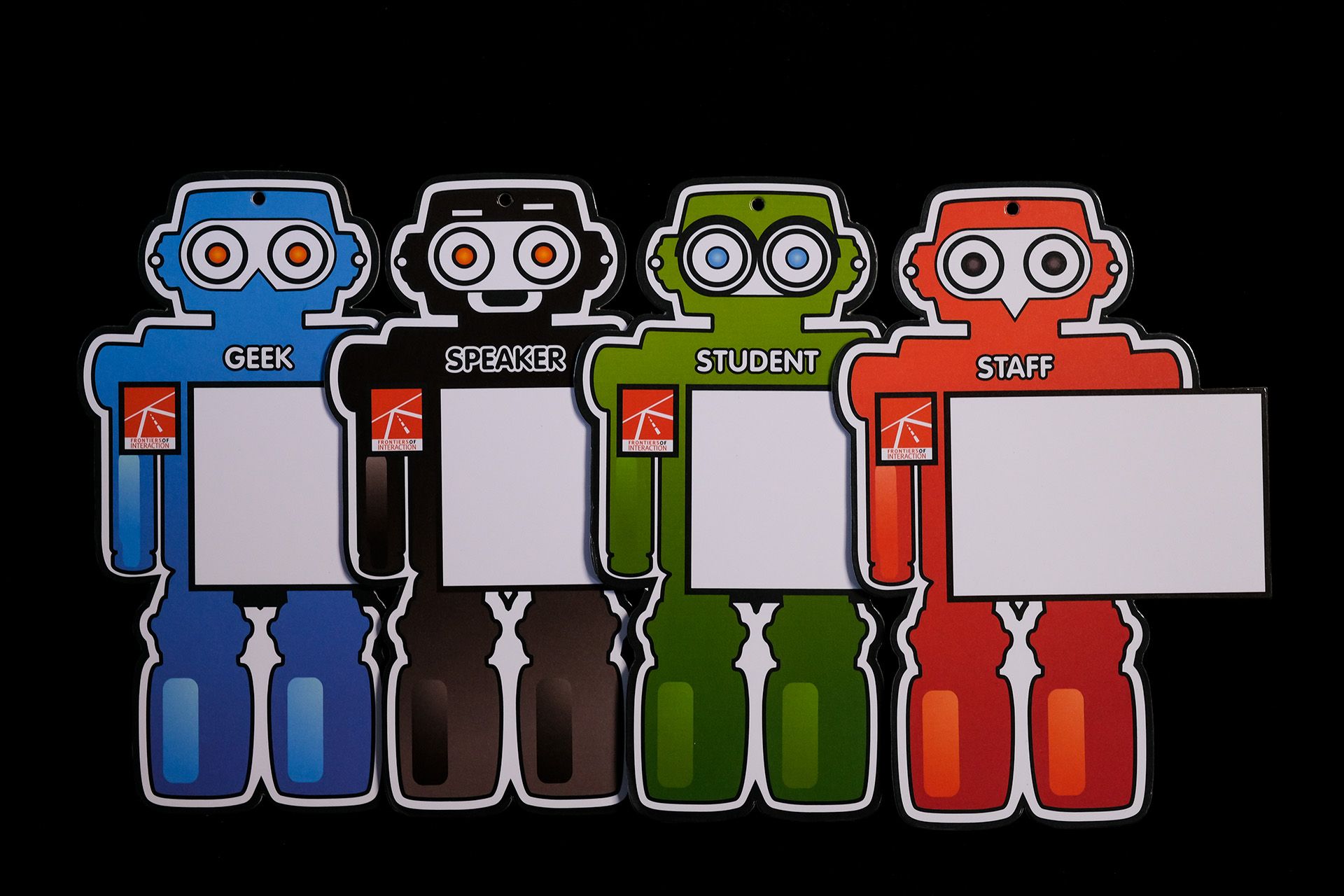
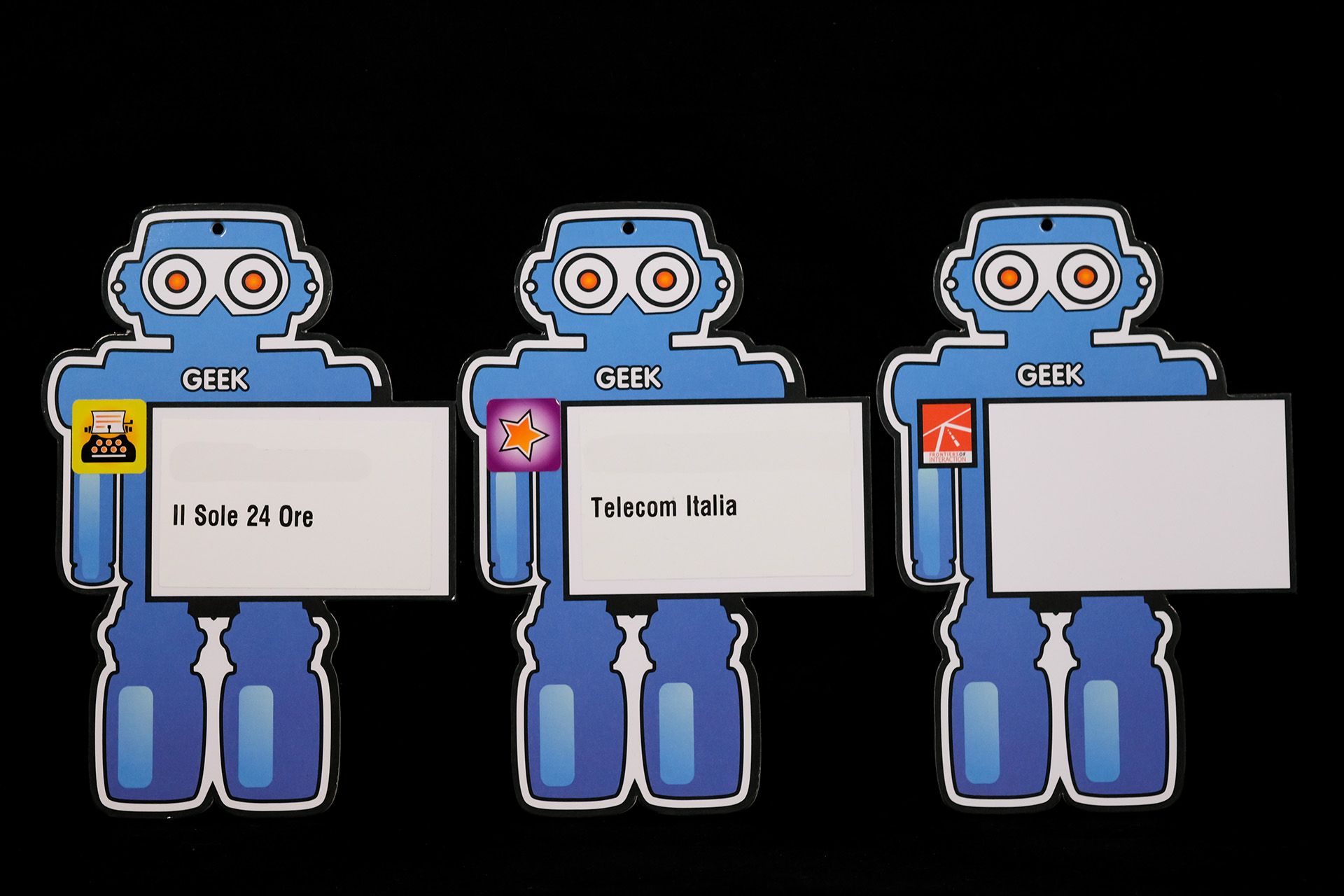
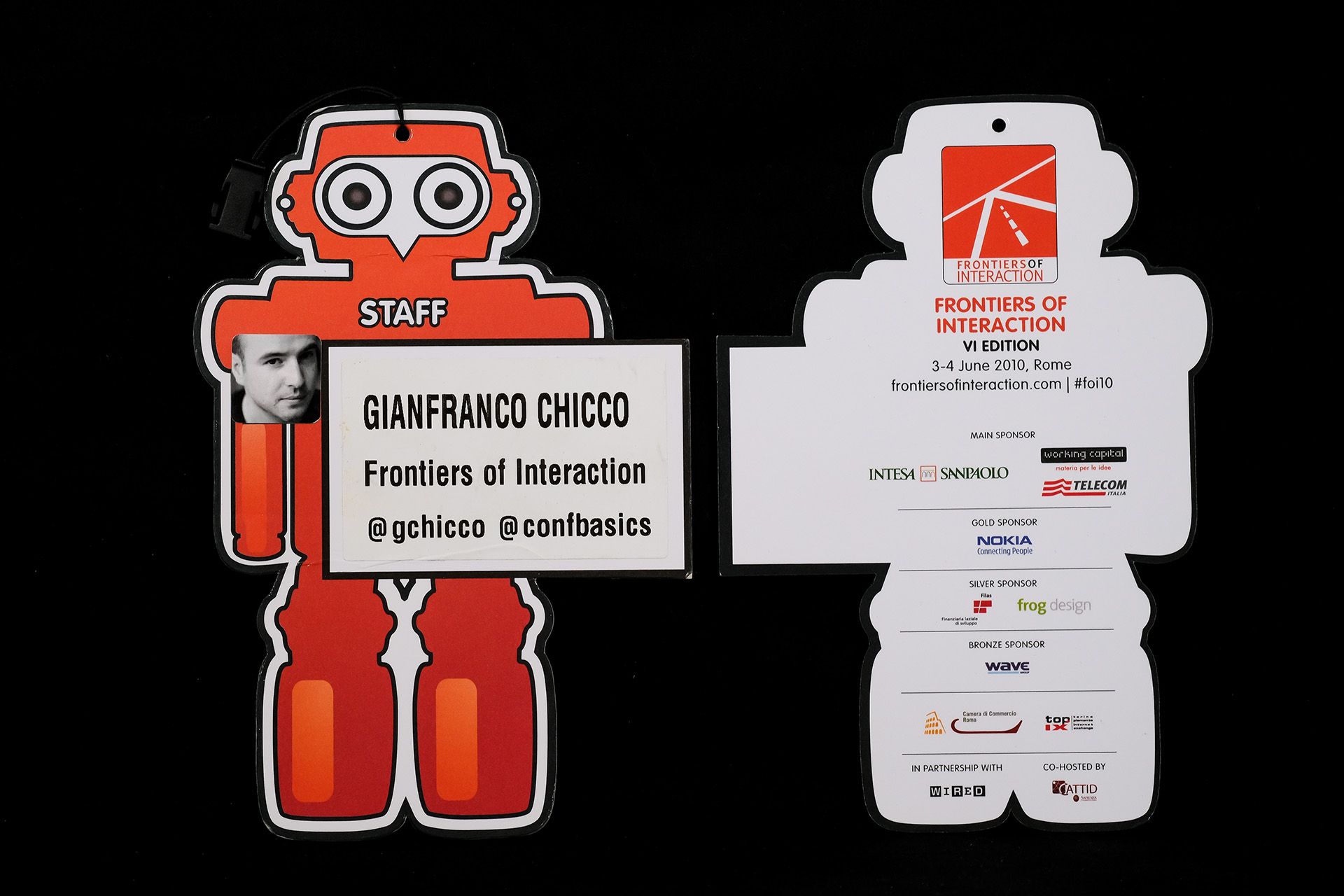
When we opened the doors of the venue, a Roman aquarium from the 1880s turned into an events space, the attendees’ reactions were incredibly positive. Some participants even tried to get hold of the other versions, and just like that a banal conference badge turned into a collectible item.
As a side note, we created a low-cost visual record of the attendees by taking a photo of them with their badge next to their face in what we called a “Faceroll”.
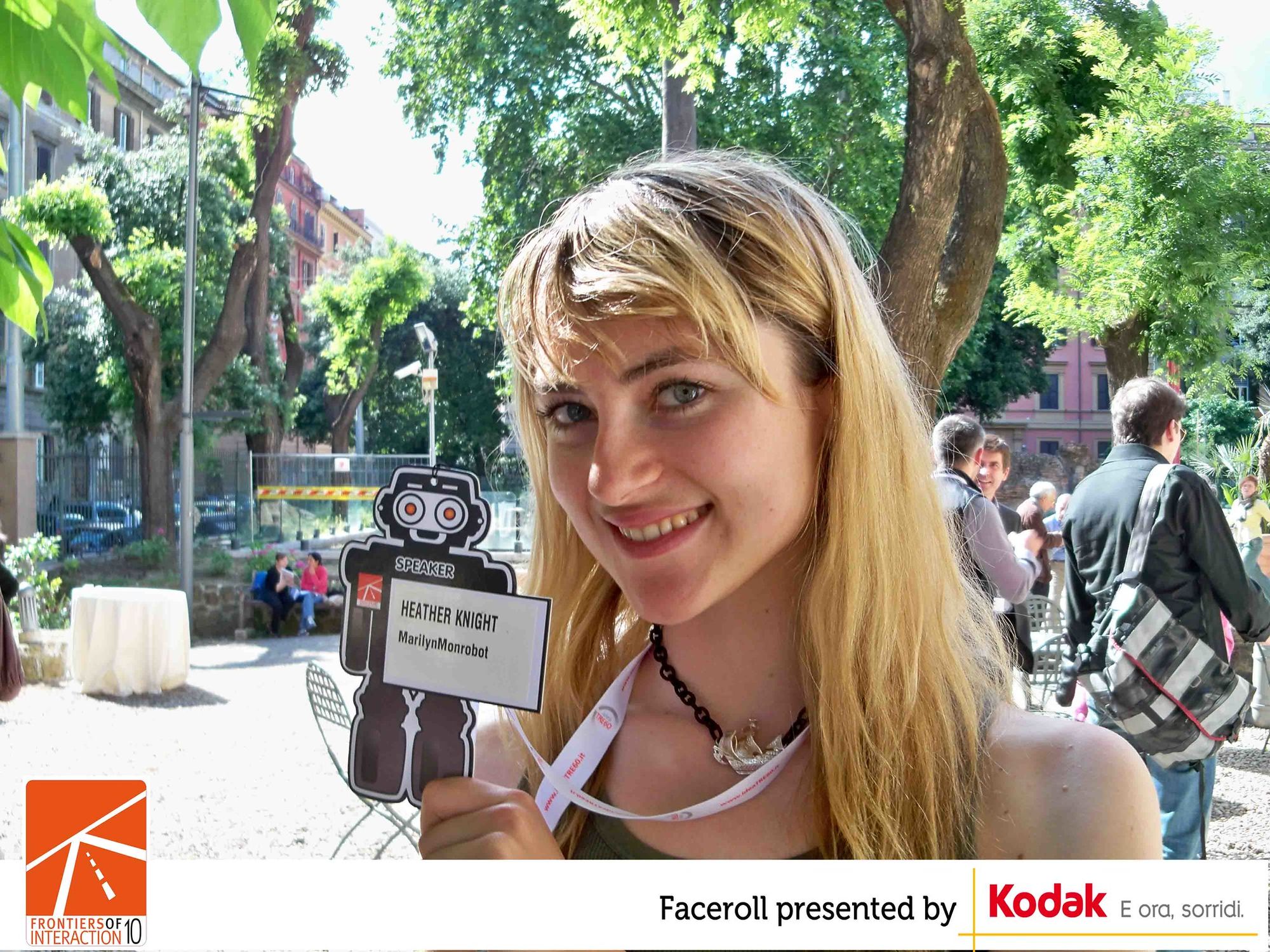
Although I decided to leave Foi after that edition (to move to a new role in Madrid), I stayed on board as an Advisor for a few more years. I was happy to see that the new team, led by Marcello Merlo, carried on the concept of the special badges, carrying what had become a tradition of Frontiers of Interaction.

